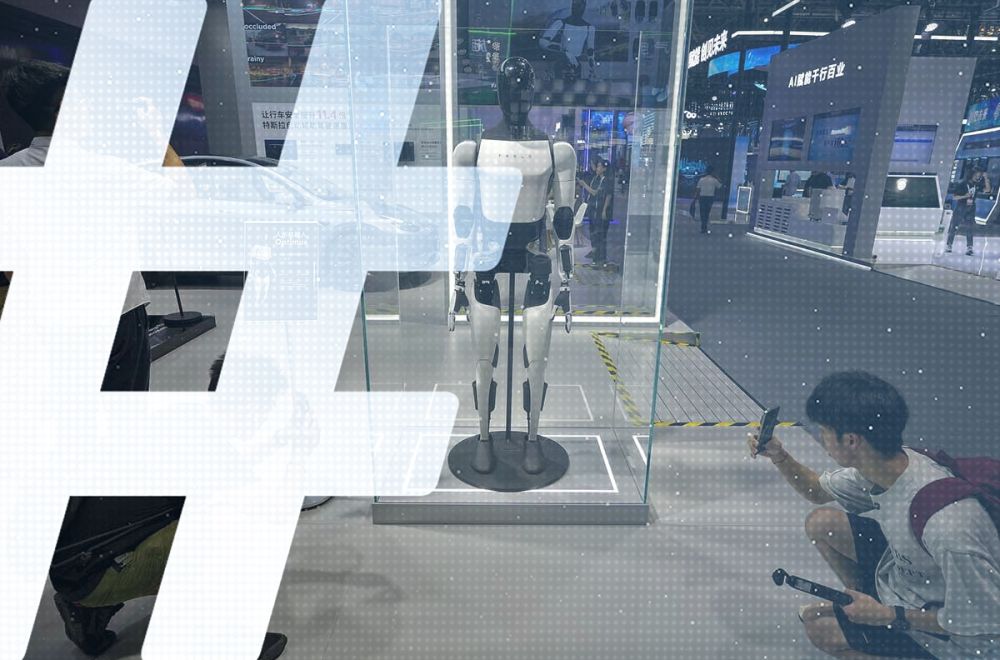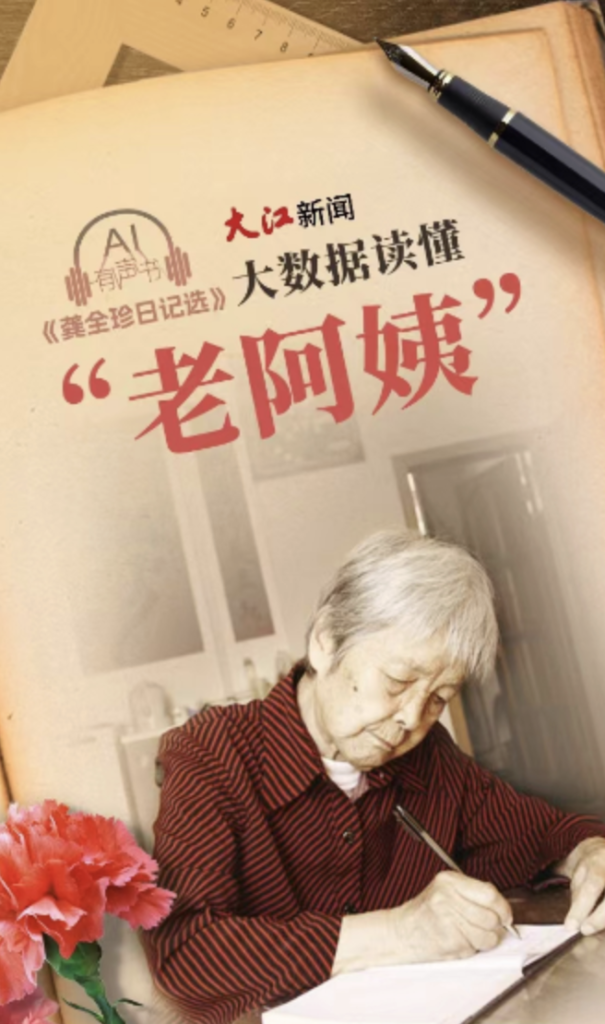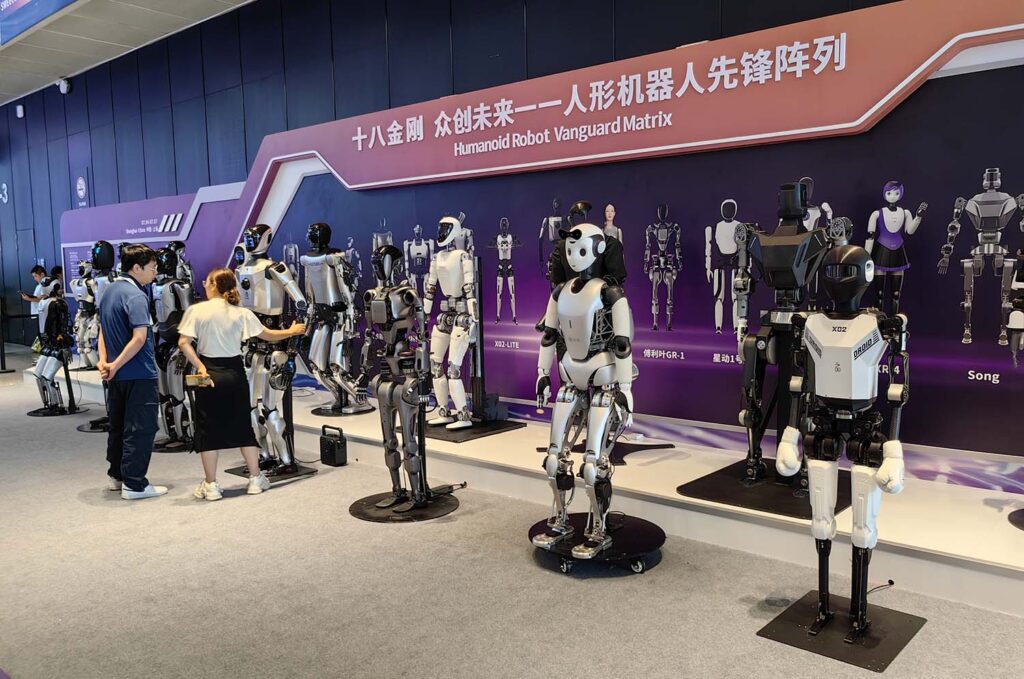
Hopes are high for AI in China. Not only, according to prevailing narratives, will the country’s advanced artificial intelligence enable it to rival the United States in a critical field of emerging tech, but this act of one-upmanship will also help to cement China’s role as a great power and ensure that it avoids another “Century of Humiliation” — the roughly 100-year period from the First Opium War to the end of WWII, when foreign powers dominated China and carved off chunks of its territory.
In fact, hopes might even be too high. State media have recently begun cautioning AI’s cheerleaders that they need to tone it down.
An article last month in the China News Publishing & Broadcasting Journal (中国新闻出版广电报) — a periodical aimed at media specialists and printed by a media group directly under the Central Propaganda Department — reminded readers that AI-generated content (AIGC) is still “in its infancy” and can’t be expected to perform miracles just yet. Some outlets know too little about AI’s current capabilities and limits, the piece says, yet they have launched full-blown AI projects that have, predictably, stagnated. It urges Chinese media to “avoid blindly following trends” and buying into “excessive hype.”
For some newsrooms, AI in its “infancy” is behaving more like a problem child than a wunderkind.
Unknown Input
For years, the CCP has made it clear that AI development is both a strategic priority and a point of national pride. It is “a new focus of international competition,” as per a State Council document from 2017. Key communiqués in 2024 from both the government and the Party indicate pushing AI is a priority.
The powerful Cyberspace Administration of China made the stakes clear in an article in People’s Daily earlier this year, when it said AI could do for China in the 21st century what the Industrial Revolution did for the UK in the 19th century: transform it from a marginal set of islands to the world’s greatest empire. China’s weakness at the time, the CAC editorial says, was the consequence of turning away from the latest technology. Since then, media nationwide have been pushing AI-generated content hard. Eleven outlets opened their own specialized AIGC studios (AIGC工作室) by the end of June this year, or have collaborated to create their own AIGC content and Large Language Models (LLMs), the computational models that are now powering generative AI.

Some of these ventures have been successful. Chengdu Radio and Television collaborated with over ten other provincial stations to create AI videos promoting the distinct features of each locality. The humble Weifang Bohai International Communication Center has a remarkably life-like AI anchor courtesy of China Daily that’s been delivering weekly bulletins since the start of July. But others have promised more than they can deliver. An online platform supervised by Jiangxi’s propaganda department announced that “after more than a year of exploration and practice,” it was opening its own AIGC studio with a laundry list of AI-based content — almost none of which has materialized.
Embracing new tech is no guarantee it will be easy to implement, even for those with access to the best resources. Some of the biggest outlets in the country have already had LLMs of their own for some time now, but despite boasting of how they shorten production times from weeks to a few days, they have produced little with these tools. CCTV used a new LLM of its own to create a series of AI-generated videos in February, promising 26 episodes but stopping after just six. The official broadcaster has published many more AI videos since then, but no longer lists the LLM used to generate them. Shanghai Radio and Television’s AIGC studio, meanwhile, has only produced five videos in as many months — not exactly an appreciable gain in efficiency.
Perhaps they have been countering the same problems as Bona Film Group with their new AI-generated series on Douyin. Technicians at the state-owned production company told reporters they were struggling to keep the algorithm from hallucinating and to get it to ensure continuity between shots and realistically depict the human body in motion. This has also troubled Kling (可灵AI) from Douyin rival Kuaishou, which despite opening a recent New York Times report on Chinese AI “closing the gap”, still has significant drawbacks. A Kling video shared online shows a gymnast whose limbs morph and merge like one possessed. We asked it to animate a photo of swimmers diving into a pool and the results defied gravity.
Nevertheless, Kuaishou says they’ll be using Kling to make a micro-drama series.
Some AI-generation software is better than others, but many of the precedents so far are less than promising. Take, for example, Yangcheng Evening News (羊城晚报), a paper under Guangdong’s provincial propaganda department. The paper recently used Tencent’s “Cloudy” (混云) LLM to create several videos announcing the establishment of their AI lab — mostly psychedelic, four-second clips spliced together with mismatched artistic styles. The novelty and prestige of the tech may excuse the patchiness of these teasers, but any full-length news bulletin or documentary created with this tool would be unwatchable.
Overhyped Output
AI has generated hype all around the world, but the nature of China’s political system makes that hype harder to call out, at least in public. Chinese state media and tech companies have been trumpeting the big promises and potential of AI while turning a blind eye to the teething problems outlets are facing right now to implement this technology. The media’s job, authorities have made clear, is to push positive messaging about China’s technological development, and AI-generated videos are very effective public displays of that. At the same time, tech firms are locked in cut-throat competition to convince the media of their successes.

This dynamic played out at the World AI Conference in Shanghai earlier this month. State media ran a series of pieces (also here and here) showcasing the million-dollar deals made, with Xinhua pointing to it as evidence of the “innovative vitality” of Chinese AI. But privately-owned, Nasdaq-listed 36Kr was less impressed. Their reviewer noted the event’s popularity and the photogenic wall of robots at the entrance for visitors to take selfies in front of, but that nothing inside was actually new. Most of the big companies were all doing the same thing. “They all play with general large models, and then make AI-generated pictures and videos,” they wrote.
AI is still an evolving technology, full of uncertainties about how the technology can and cannot be used. There have even been rumblings in the West that LLMs may be a dead end altogether, unable to improve further or to do so without extreme difficulty. For its part, China’s leadership is dead-set that this is the way forward, and state media like the Economic Daily (经济日报) have urged readers to ignore fluctuating sentiment on Wall Street about AI investments. Bullishness is the order of the day. Now it’s up to the country’s media outlets to find a way to make the promise of AI real.




















